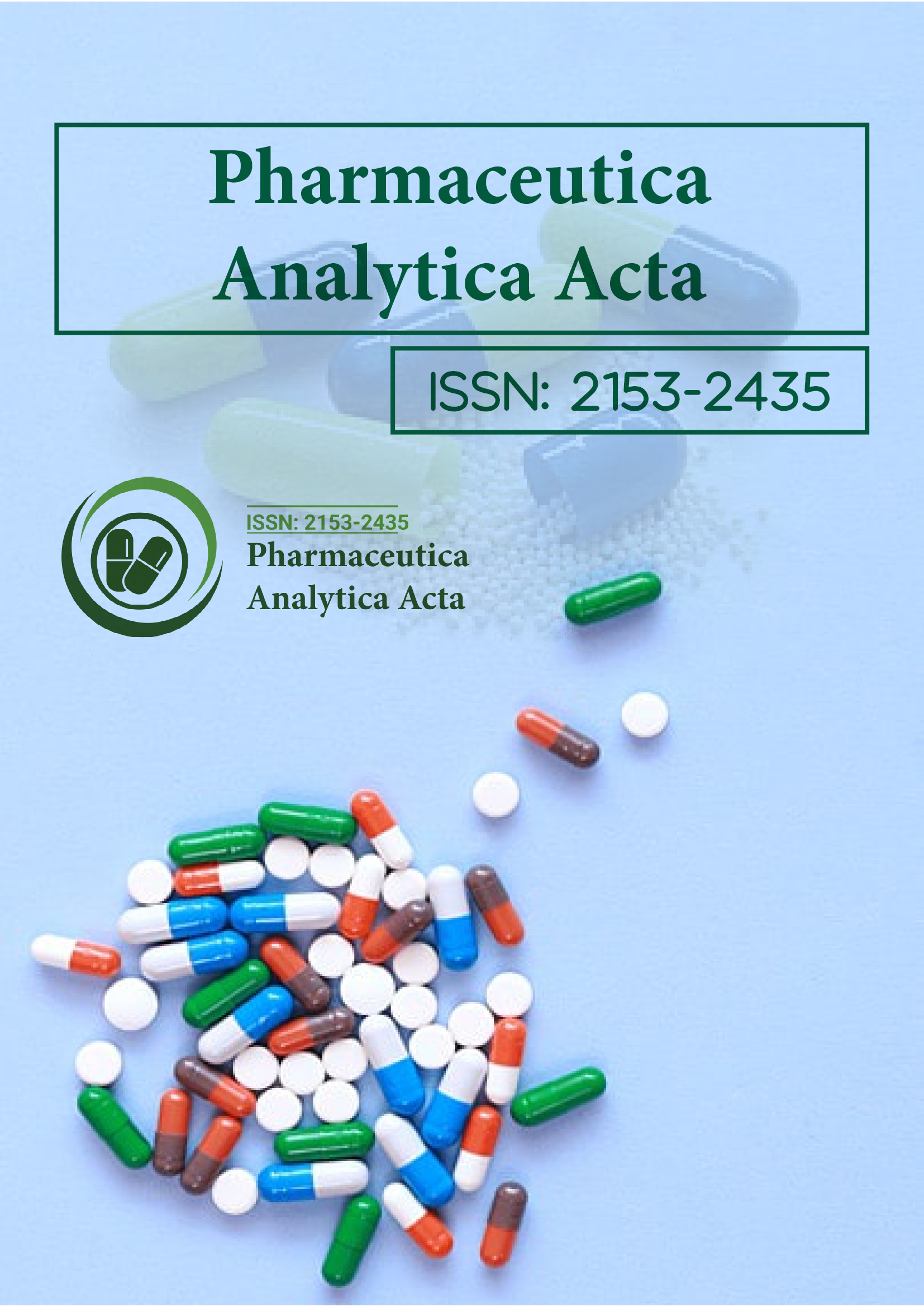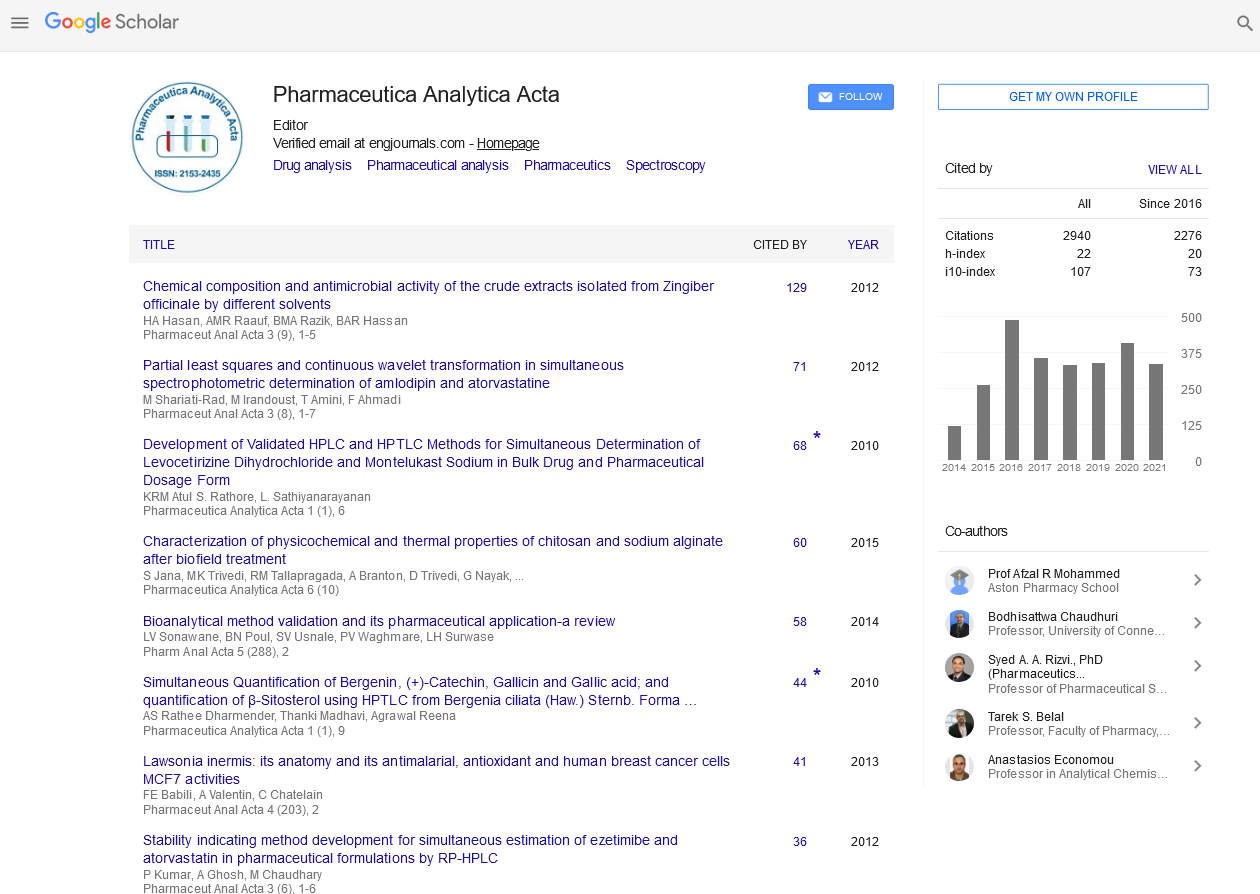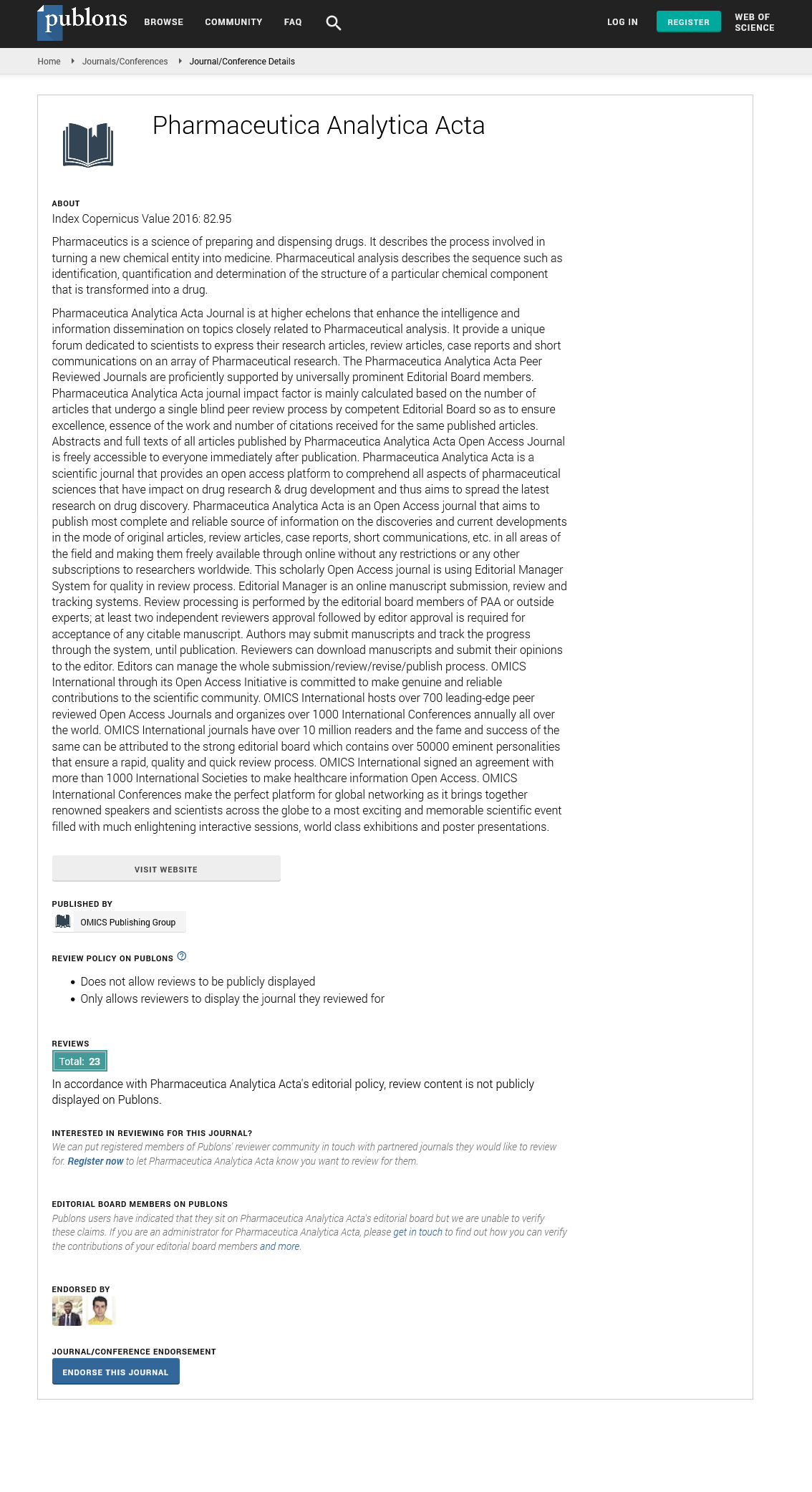Indexed In
- Open J Gate
- Genamics JournalSeek
- Academic Keys
- JournalTOCs
- The Global Impact Factor (GIF)
- China National Knowledge Infrastructure (CNKI)
- Ulrich's Periodicals Directory
- RefSeek
- Hamdard University
- EBSCO A-Z
- OCLC- WorldCat
- Publons
- Geneva Foundation for Medical Education and Research
- Euro Pub
- Google Scholar
Useful Links
Share This Page
Journal Flyer

Open Access Journals
- Agri and Aquaculture
- Biochemistry
- Bioinformatics & Systems Biology
- Business & Management
- Chemistry
- Clinical Sciences
- Engineering
- Food & Nutrition
- General Science
- Genetics & Molecular Biology
- Immunology & Microbiology
- Medical Sciences
- Neuroscience & Psychology
- Nursing & Health Care
- Pharmaceutical Sciences
Short Communication - (2024) Volume 15, Issue 4
Revolutionizing Healthcare: The Future of Smart Drug Delivery Systems
Ann Parson*Received: 29-Nov-2024, Manuscript No. PAA-24-27770; Editor assigned: 02-Dec-2024, Pre QC No. PAA-24-27770 (PQ); Reviewed: 16-Dec-2024, QC No. PAA-24-27770; Revised: 23-Dec-2024, Manuscript No. PAA-24-27770 (R); Published: 30-Dec-2024, DOI: 10.35248/2153-2435.24.15.801
Description
The advent of smart drug delivery systems is causing a significant upheaval in the healthcare sector and has the potential to completely transform how patients are given their prescriptions [1]. These systems have the potential to transform medicine in the future by improving the effectiveness, individualisation and focus of therapies [2]. Conventional drug delivery systems frequently depend on general administration techniques, including intravenous injections or oral pills, which might be inaccurate and result in adverse effects or dose waste. Smart drug delivery systems, on the other hand, are made to release drugs in a precise, targeted and adaptable way, improving patient outcomes and treatment efficiency. Real-time monitoring and sophisticated sensors are also being used in the creation of smart medicine delivery systems. These systems have the ability to monitor how the body reacts to medication and modify the release of the drug as necessary [3]. A drug delivery device's sensors, for instance, might track a patient's blood glucose levels and automatically give insulin when they surpass a predetermined threshold. In the management of chronic illnesses like diabetes, where patients may require ongoing monitoring to make sure their medicine is working as intended, this kind of responsiveness is essential. These systems claim to improve patient outcomes, convenience and quality of life by removing the need for individuals to manually administer medications or track their own conditions [4]. The management of chronic diseases is not the only use for intelligent drug delivery systems. These systems can be adjusted to match the unique requirements of each patient in the field of personalised medicine [5]. In precision oncology, where treatment regimens are customised according to a patient's cancer's genetic composition, personalised therapies are particularly pertinent. By employing intelligent delivery systems, physicians may guarantee that medications reach the malignant cells directly, minimising needless chemotherapy exposure and negative side effects including immunological suppression, nausea and hair loss [6]. In addition to increasing efficacy, this degree of personalisation gives patients a more individualised and bearable therapy, which is a huge advancement in the fight against cancer. Smart drug delivery systems have the potential to cure a variety of illnesses, including neurological problems and cardiovascular issues, in addition to cancer. These devices may, for example, send treatments like blood thinners or clot-busting agents straight to the site of an injury or blockage in the treatment of heart disease, accelerating healing and lowering the risk of consequences [7]. Drug delivery systems could be developed to transfer pharmaceuticals over the blood-brain barrier, which is a major obstacle in the treatment of many brain-related ailments, including neurological conditions such as Parkinson's disease or Alzheimer's disease. This barrier frequently keeps necessary medications from getting to the brain, but with improved delivery methods, it might be feasible to send medicines straight to the brain, enhancing the management of these crippling illnesses. But even though smart drug delivery systems have many benefits, there are still issues that must be resolved before they can be extensively used. One of the biggest challenges is the intricacy of creating safe and efficient systems [8]. Advanced engineering and stringent regulatory oversight are necessary to integrate sensors, nanotechnology and real-time monitoring without creating new dangers. Furthermore, patient privacy and data security are issues, particularly when monitoring devices are recording a patient's health data continuously. To ensure widespread use and build public trust, it will be essential to make sure these systems are safe and adhere to privacy regulations. Additionally, creating and manufacturing intelligent medication delivery devices continues to be expensive. Although these systems provide long-term healthcare cost reductions, there is a significant upfront cost associated with research, development and manufacture [9]. It is anticipated that the cost would gradually drop as economies of scale take effect and technology advances, opening up these devices to a wider range of patients. Until then, it will be difficult to make sure that individuals who stand to gain the most from these technologies are given access to them, rather than just the wealthiest patients or healthcare institutions. Smart drug delivery systems, which combine state-of-the-art technologies to deliver more individualized, effective and targeted therapies, represent the next frontier in healthcare. These technologies have the potential to improve patient compliance, minimize adverse effects and optimize drug delivery, which will improve health outcomes and save money. The future of healthcare appears bright as we progress towards more sophisticated, adaptable and personalized drug delivery systems, even though there are still obstacles to be addressed [10]. Smart drug delivery systems are at the centre of the healthcare revolution that has already started.
References
- Alavi SE, Alharthi S, Alavi SZ, Raza A, Shahmabadi HE. Bioresponsive drug delivery systems. Drug Discov Today. 2024;29(1):103849.
[Crossref] [Google Scholar] [PubMed]
- Londhe V, Sharma P. Unfolding the future: Self-controlled catalytic nanomotor in healthcare system. Mater Sci Eng C Mater Biol Appl. 2020;117:111330.
[Crossref] [Google Scholar] [PubMed]
- Gholap AD, Uddin MJ, Faiyazuddin M, Omri A, Gowri S, Khalid M. Advances in Artificial Intelligence in Drug Delivery and Development: A Comprehensive Review. Comput Biol Med. 2024:108702.
[Crossref] [Google Scholar] [PubMed]
- Alowais SA, Alghamdi SS, Alsuhebany N, Alqahtani T, Alshaya AI, Almohareb SN, et al. Revolutionizing healthcare: The role of artificial intelligence in clinical practice. BMC Med Educ. 2023;23(1):689.
[Crossref] [Google Scholar] [PubMed]
- Malode SJ, Alshehri MA, Shetti NP. Revolutionizing human healthcare with wearable sensors for monitoring human strain. Colloids Surf B Biointerfaces. 2024:114384.
[Crossref] [Google Scholar] [PubMed]
- Adepu S, Ramakrishna S. Controlled drug delivery systems: Current status and future directions. Molecules. 2021;26(19):5905.
[Crossref] [Google Scholar] [PubMed]
- Thorn CR, Howell PL, Wozniak DJ, Prestidge CA, Thomas N. Enhancing the therapeutic use of biofilm-dispersing enzymes with smart drug delivery systems. Adv Drug Deliv Rev. 2021;179:113916.
[Crossref] [Google Scholar] [PubMed]
- Shao M, Hussain Z, Thu HE, Khan S, Katas H, Ahmed TA, et al. Drug nanocarrier, the future of atopic diseases: Advanced drug delivery systems and smart management of disease. Colloids Surf B Biointerfaces. 2016;147:475-491.
[Crossref] [Google Scholar] [PubMed]
- Yi W, Yan D, Wang D, Li Y. Smart drug delivery systems to overcome drug resistance in cancer immunotherapy. Cancer Biol Med. 2023;20(4):248.
[Crossref] [Google Scholar] [PubMed]
- Khadka B, Lee B, Kim KT. Drug delivery systems for personal healthcare by smart wearable patch system. Biomolecules. 2023;13(6):929.
[Crossref] [Google Scholar] [PubMed]
Citation: Parson A (2024). Revolutionizing Healthcare: The Future of Smart Drug Delivery Systems. Pharm Anal Acta. 15:801.
Copyright: © 2024 Parson A. This is an open access article distributed under the terms of the Creative Commons Attribution License, which permits unrestricted use, distribution, and reproduction in any medium, provided the original author and source are credited.


